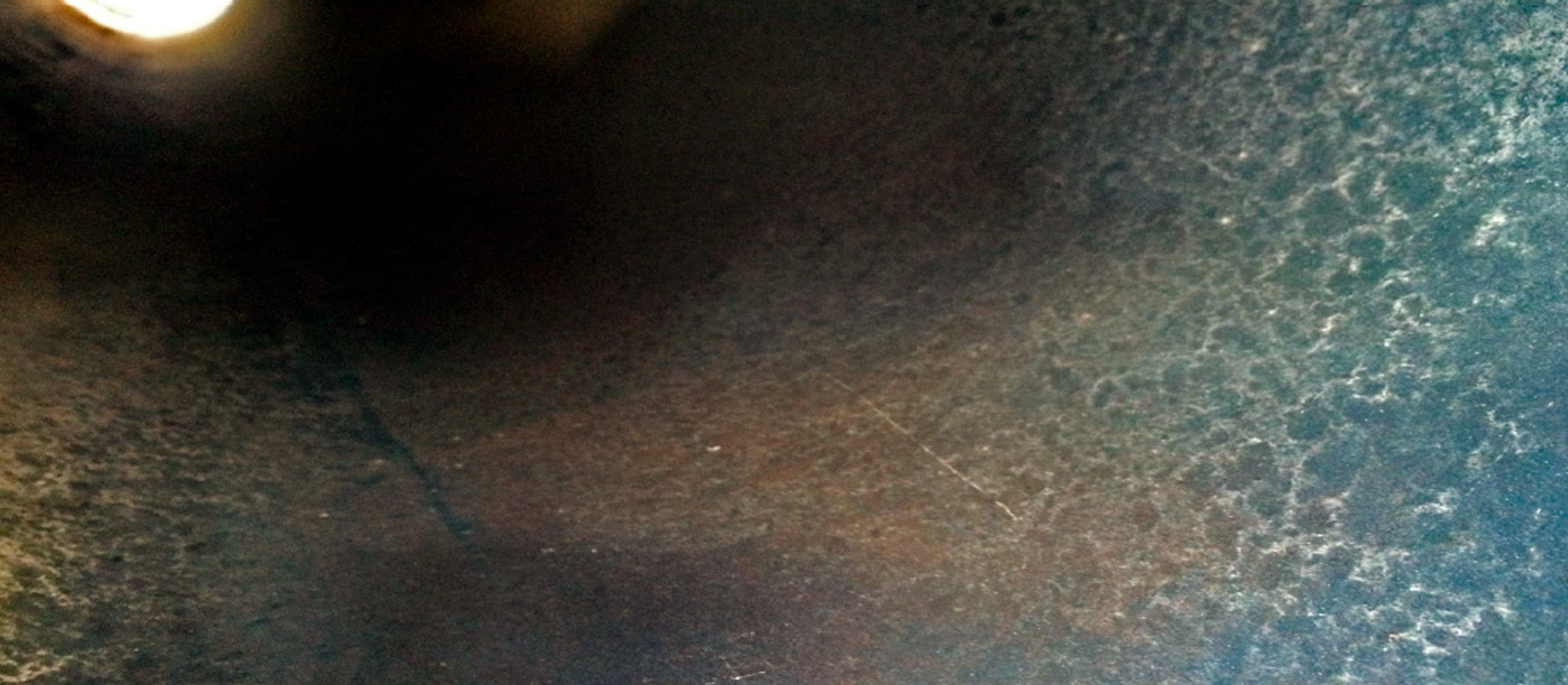The chemical element vanadium is a hard, silvery grey, ductile, and malleable transition metal. The element is found only in chemically combined form in nature, but once isolated artificially, the formation of an oxide layer stabilizes the free metal somewhat against further oxidation.
The most important industrial vanadium compound, vanadium pentoxide, is used as a catalyst for the production of sulfuric acid and benefits in the production of specialty steel alloys. While vanadium has a positive protective effect in the above, the compound is unwanted in places like engines, absorption towers, regenerators, and boilers.
Vanadium coating of the inside of a pipe.
So What Causes the Problems?
Vanadium is for example present in Petroleum in the form of phorporyne complexes. These complexes get concentrated on the higher-boiling fractions, which are the base of heavy residual fuel oils. Residues of sodium, primarily from sodium chloride and spent oil treatment chemicals, are also present. More than 100 ppm of sodium and vanadium will yield ash capable of causing corrosion. 
Corrosion damage caused by vanadium coating.
IKM Ocean Team Removes the Cause of Corrosion
Whatever, the issue with vanadium is, it is crucial to continuously maintain your system, otherwise, the corrosion outcome will be fatal.
In collaboration with our customer, IKM Ocean Team contributes with chemical solutions and presents an overview of ideas for complete and cost-effective methods that ensure that all involved material is free of vanadium. Thereby, we secure and prolong our client system's life span, the client avoid further corrosion and the client are ready to restore any occurred damages.

Example of a partly cleaned tower packing ring to visualize state before and after cleaning.
Chemical Cleaning of Vanadium Scale
Complete and cost-effective methods to clean your system and prolong its life.